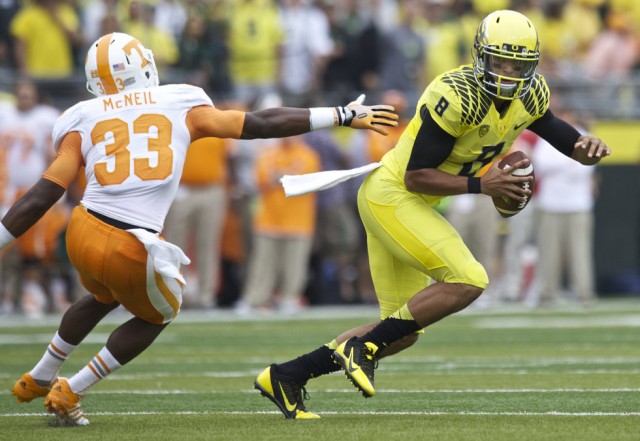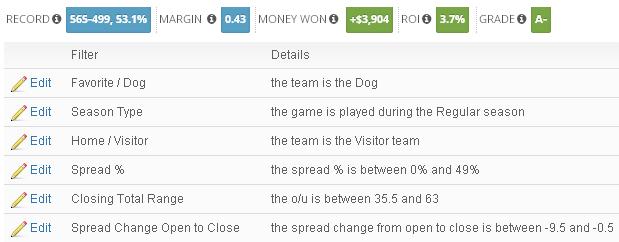
2014 College Football Betting Against the Public Report
Betting against the public has proven to be a historically profitable strategy across the six major American sports leagues, but constructing a solid system for College Football can be surprisingly difficult. One of the main reasons for this is that the number of bets varies greatly from game to game. For example, a contest between Alabama and Auburn may receive more than ten times the number of bets as a game between two smaller schools which greatly amplifies the impact of public betting.
For this reason, simply looking at teams receiving less than 30% of spread bets may not be as accurate of an indicator as other sports such as the NFL (where every game is widely bet regardless of the teams). Our goal was to combine a number of filters we knew to be historically profitable along with our contrarian philosophy to create a winning betting system.
The first step was to examine home field advantage to see whether this was overvalued. Using our Bet Labs software we quickly determined that since 2005 visitors have posted a 3,238-3,167 ATS record. Despite a 50.6% winning percentage, this simple filter is not enough to compensate for the vig/juice charged by sportsbooks. However, it did provide a nice starting point.
We were also aware that road teams, and specifically road dogs, tend to be undervalued in low-scoring games. The logic behind this is simple enough: the less scoring there is, the more significant each point on the spread becomes. Knowing this, we used our “favorite/dog” filter to focus solely on underdogs while using the “closing total range” filter to focus on games with a closing over/under of 63 or less. This resulted in a 1,897-1,827 ATS record; however, despite an increased winning percentage we were still unable to cover the sportsbook juice.
[Want to create your own winning betting systems? Try Bet Labs now for only $49!]
With our system still failing to prove profitable, it was time to bring out the big guns and examine the impact of reverse line movement — one of the best sharp money indicators. By setting our “spread percentage” filter to examine teams receiving less than 49% of spread bets and utilizing our “spread change from open to close” filter to look at teams that became smaller dogs, we are able create a profitable reverse line movement system.

As you can see from the screenshot above, in games with low totals road underdogs experiencing reverse line movement have gone 565-499 (53.1%) with +39.04 units won and a 3.7% ROI. While this has the type of significant sample size we’re looking for in a betting system, we believed that focusing on more lopsided bet games would increase our return on investment. Our next step was to examine the profitability of this system when teams are receiving less than 40%, 35% and 30% of public bets.
It’s interesting to note that in terms of units earned, betting this system at the 39% level has been the most profitable. However, the return on investment increases at each interval as we focus on more and more lopsided bet games. For that reason we would recommend that bettors focus on the 29% level where road dogs have gone 205-163 for +32.0 units and an 8.7% ROI.
Have any questions for the staff at Sports Insights? E-mail us at help@sportsinsights.com, call us at 877-838-2853 or utilize our live chat function to speak directly with a customer service representative.
9/13/14 Update: This system has gone 8-5 (+2.5 units) in the 2014 season and is now 213-168 (+34.5 units, 9.1% ROI) overall.
[adrotate group=”4″]

Stephen Nelson
08/28/2014 at 3:59 pmwhat do you mean by “regular season”. Does that mean league games only?
David Solar
08/28/2014 at 4:00 pmRegular season simply means that we’re not including Conference Championship games or Bowl games.
Brian
08/28/2014 at 4:08 pmWhat is ROI?
David Solar
08/28/2014 at 4:11 pmROI is short for Return on Investment. You can see how ROI is calculated here: https://www.sportsinsights.com/blog/calculating-return-on-investment-roi-in-sports-betting/
Brian
08/28/2014 at 4:12 pmThanks David!
Angela Sanders
09/02/2014 at 3:53 amVery nice info. Thanks sir.